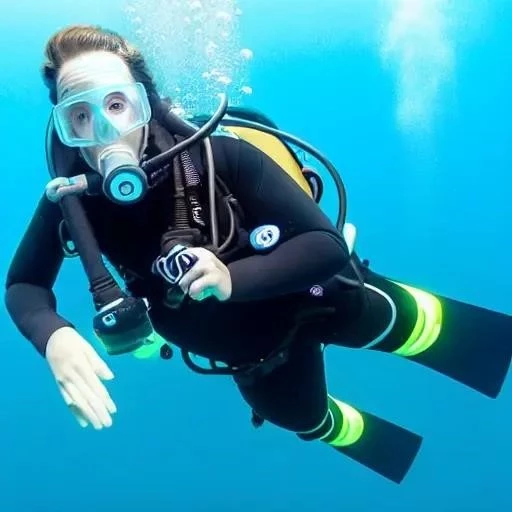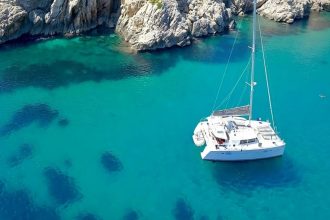Imagine gliding effortlessly through an ethereal blue world, surrounded by vibrant coral gardens and schools of iridescent fish․ This captivating vision of scuba diving beckons millions worldwide, promising unparalleled adventure and a profound connection with our planet’s hidden aquatic realms․ Yet, for many aspiring underwater explorers, a single, persistent question often surfaces, casting a shadow of doubt: “Do I need to be an Olympic-level swimmer to experience this magic?” It’s a remarkably common misconception, one that frequently deters individuals from embarking on what could be the most transformative journey of their lives․
The short answer, brimming with optimism for countless dreamers, is a resounding ‘no’ – not in the way many people envision․ While a fundamental comfort and proficiency in water are undeniably crucial, the rigorous, competitive swimming prowess often associated with professional athletes is far from a prerequisite for becoming a certified diver․ Modern scuba gear, combined with structured, comprehensive training programs meticulously designed to build confidence and competence, fundamentally redefines the relationship between an individual’s swimming ability and their capacity to explore the underwater world safely and joyfully․ This liberating truth opens the aquatic frontier to a far broader spectrum of adventurers than previously imagined․
Essential Prerequisites for Your Scuba Diving Journey
| Requirement Category | Specific Requirement/Skill | Importance for Scuba Diving |
|---|---|---|
| Age & Health | Minimum Age (e․g․, 10 years for Junior Open Water) | Ensures physical and mental maturity for understanding training and safety protocols․ |
| Medical Fitness Clearance | Confirms no pre-existing conditions that could be exacerbated by the underwater environment (e․g․, respiratory, cardiac issues)․ | |
| Watermanship | Comfort in Water & Basic Swimming Ability (e․g․, 200m unassisted or 300m with mask, fins, snorkel) | Essential for surface safety, comfort, and demonstrating self-reliance in the water․ |
| Treading Water/Floating (e․g․, 10 minutes) | Crucial for maintaining buoyancy on the surface without relying on equipment, especially during rests․ | |
| Training & Knowledge | Completion of Certification Course (e․g․, PADI Open Water Diver) | Mandatory structured learning covering dive theory, confined water skills, and open water dives․ |
| Understanding of Dive Theory | Knowledge of physics, physiology, equipment operation, and dive planning for safe and responsible diving․ | |
| Equipment Proficiency | Familiarity with Scuba Gear | Learning to assemble, don, use, and maintain essential gear like the BCD, regulator, mask, and fins․ |
For more detailed information and to find a dive center near you, visit the official PADI Website․
So, if not an Olympic swimmer, what is truly required? The emphasis shifts dramatically from raw athletic prowess to comfort, confidence, and controlled movement within the aquatic environment․ Certification agencies like PADI (Professional Association of Diving Instructors) and SSI (Scuba Schools International) typically mandate a fundamental watermanship assessment․ This usually involves swimming 200 meters unassisted or 300 meters with a mask, fins, and snorkel, along with a 10-minute float or tread water without aids․ These aren’t tests of speed or endurance, but rather affirmations of one’s ability to handle oneself calmly and competently on the surface should the need arise․ It’s about demonstrating a basic, reassuring independence in the water, not breaking any records․
Crucially, once submerged, the dynamic changes entirely․ Scuba diving, at its essence, is less about vigorous swimming and more about controlled, efficient movement․ Imagine an astronaut gracefully navigating the weightlessness of space; a diver experiences a remarkably similar sensation of effortless suspension․ Your buoyancy compensator (BCD) meticulously manages your vertical position, while your fins, rather than demanding powerful strokes, provide subtle, yet incredibly effective propulsion․ “We teach people to become one with the water, to move with minimal effort,” explains Sarah Jenkins, a Master Scuba Diver Trainer with over two decades of experience․ “It’s about mastering buoyancy control, using your breath, and making small, deliberate fin kicks․ It’s far more akin to flying than it is to competitive swimming, offering a truly unique, almost meditative experience․”
This shift in perspective is incredibly liberating․ Many individuals who might feel self-conscious about their swimming technique in a pool discover an entirely new realm of confidence underwater․ The comprehensive training curriculum, thoughtfully structured, progressively builds skills․ By meticulously guiding students through a series of foundational exercises in confined environments – such as shallow pools or sheltered bays – instructors systematically build proficiency, ensuring that each participant develops an intuitive understanding of buoyancy, propulsion, and emergency protocols before venturing into the vastness of the open ocean․ This structured approach, combined with modern, sophisticated equipment, empowers divers of all backgrounds to overcome initial anxieties and embrace the thrill of underwater exploration․
Indeed, the global diving community is a vibrant tapestry woven from diverse individuals, many of whom would never describe themselves as ‘swimmers’ in the traditional sense․ From engineers exploring sunken wrecks to artists capturing marine life through photography, the common thread isn’t aquatic athleticism, but a shared passion for discovery and profound respect for the ocean․ The forward-looking advancements in dive technology, coupled with increasingly accessible and inclusive training methodologies, continue to democratize this once-niche activity, inviting everyone to partake in its profound wonders․ The future of underwater exploration is undeniably bright and welcoming, eagerly awaiting your plunge․






